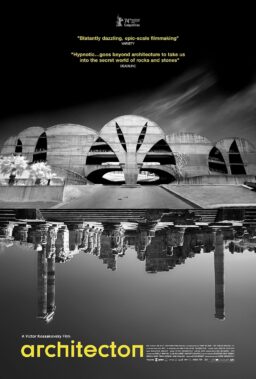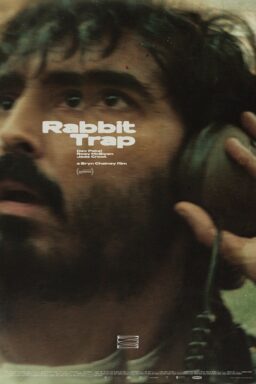From Chris Baker, Wired Game/Life blog:
Did you know that Roger Ebert actually reviewed a videogame? The venerable movie critic for the Chicago Sun-Times and pioneer of the thumbsup/thumbsdown rating system has enraged geeks by repeatedly opining that videogames are not art. (He’s recently clarified his position: Games can be art, just as anything can be art, but they cannot be high art.) Bloggers are attacking Ebert, many suggesting that he’s a clueless old dude who’s never actually played a videogame. Not true. Back in the day, Ebert actually critiqued one for Wired Magazine….
http://blog.wired.com/games/2007/07/roger-ebert-g-1.html
I think it’s telling that the geeks are so stung by Ebert’s position. There’s a sense that if any of the mainstream movie critics could “get” games, it’d be this guy. Ebert’s always been open to new genres and storytelling styles, and he’s always been appreciative of CG imagery when its in service of the story. (He was as rapturous about “Tron” as any twelve year-old arcade addict, and he loved “Final Fantasy: Spirits Within” more than anybody in the whole world except for maybe Hironobu Sakaguchi.) He’s also consistently championed the artist’s freedom of expression in the face of moral hysteria and censorship, and he’s never been squeamish about depictions of graphic violence onscreen when he feels that it’s artistically justified.
A lot of the people criticizing Ebert are ignoring the way he defines art. He states flat out that for him, high art is a linear experience in which all the decisions have been made in advance by the artist before you experience it. He writes:
I believe art is created by an artist. If you change it, you become the artist…Art seeks to lead you to an inevitable conclusion, not a smorgasbord of choices.
You may not agree with Ebert’s opinion that experiences in which players control the outcome have more in common with sports than with art. (You may also feel that sports themselves can be art — check out art critic Dave Hickey’s essay on the brilliance of pro basketball.) But Ebert’s absolutely right that videogames are very VERY different from linear experiences like music, novels and movies. Hideo Kojima, a brilliant game designer and a noted cinephile, insists that game design is more like architecture than filmmaking.
And no one can say Ebert doesn’t understand or value the open-endedness of games, or the joy of exploring a compelling virtual world. Back in September of 1994, when multimedia CD-Roms were the hotness, Ebert dipped a toe in the gaming pond and wrote about his experiences for Wired Magazine. Here in its entirety is his review of an old point-and-click adventure game.
“Cosmology of Kyoto” for Mac US$98 Azuma Lander International: +1 (415) 928 7914, fax +1 (415) 362 6879.
“The Cosmology of Kyoto” CD-ROM comes with a bare minimum of instructions, informing me in a few words how to move within the images. No goal is established and no points are scored; the game never informs me what the object is, although it discreetly tracks the levels of karma and cash I have attained and keeps an inventory of my possessions. The disc comes packaged with a large fold-out map showing the streets and principal buildings of Kyoto – circa 900, when, as Heiankyo, it was the capital of Japan. I begin to wander the streets.
The richness is almost overwhelming; there is the sense that the resources of this game are limitless and that no two players would have the same experience. I have been exploring the ancient city in spare moments for two weeks now, and doubt that I have even begun to scratch the surface. This is the most beguiling computer game I have encountered, a seamless blend of information, adventure, humor, and imagination – the gruesome side-by-side with the divine.
In this medieval Kyoto, people exist alongside ghosts, demons, and goblins. On my travels I have met – and interacted with – a dog eating entrails, long-winded old farts, tradespeople (who offered me medicines, dried fish, cloth, rice cakes, amulets, and a chance to lose money on a cock fight), a monk leading a prayer meeting, kids playing ball in the streets (one is beheaded by a passerby), a friendly guide dog, a maiden with an obscenely phallic tongue, and a gambler who taught me a dice game.
The graphics are hauntingly effective, using a wide-screen landscape format. The individual characters are drawn with vivid facial characteristics, a cross between the cartoons of medieval Japanese art and the exaggerations of modern Japanimation. The speaking voices are filled with personality, often taunting, teasing, or sexy. There is the sense, illusory but seductive, that one could wander this world indefinitely. This is a wonderful game. — Roger Ebert
This is an excellent critique. He avoids the reviewers’ crutch of defining the game in terms of other games or films (“It’s like Myst meets Kwaidan!”). I love the way he dispenses with his criticisms quickly, and doesn’t get bogged down in describing the plot or the intentions of the game designer, instead focusing on his own experience as a player. Best of all, his review really makes me want to play the game, which is now available as freeware.
Mr. Ebert, if you are looking for freelance work, drop me a line. I’d love to run your review of a new title like Bioshock or Mass Effect or GTAIV in Wired Magazine.











